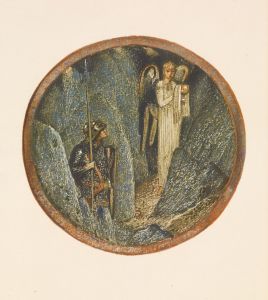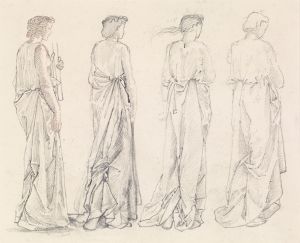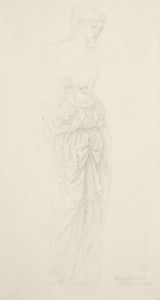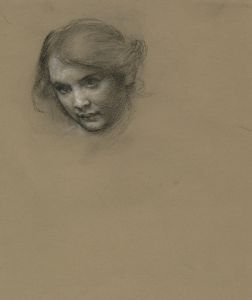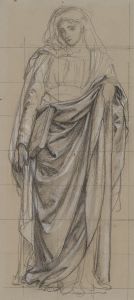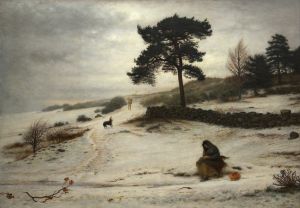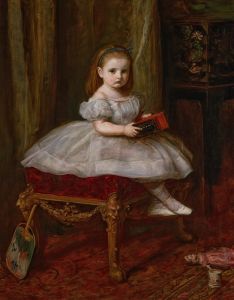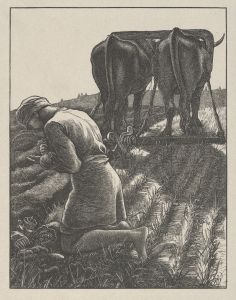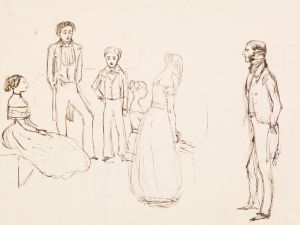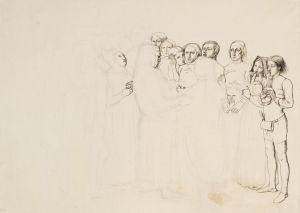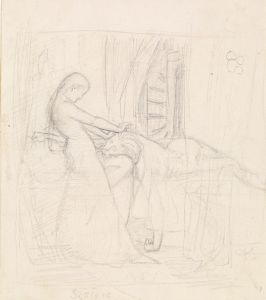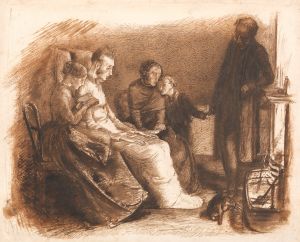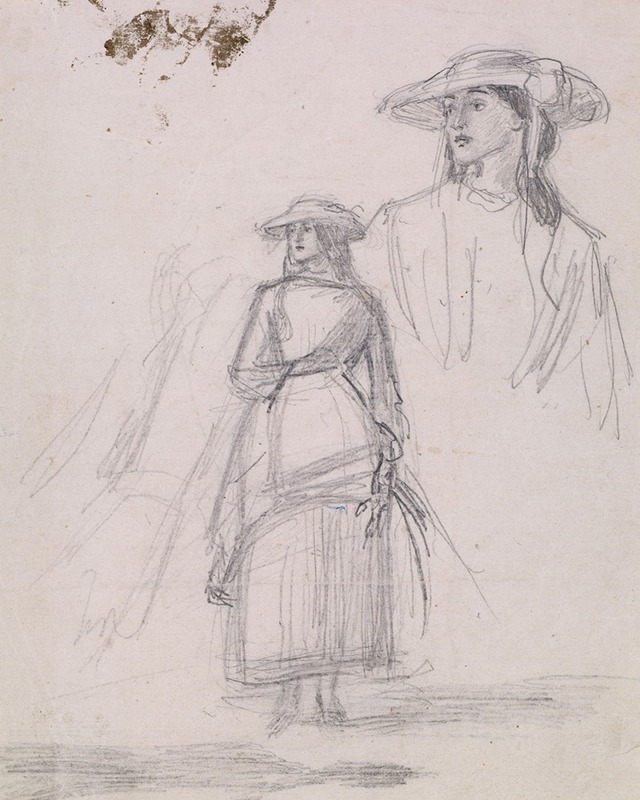
Thomas Hood’s Ruth – Two Figure Sketches
A hand-painted replica of Sir John Everett Millais’s masterpiece Thomas Hood’s Ruth – Two Figure Sketches, meticulously crafted by professional artists to capture the true essence of the original. Each piece is created with museum-quality canvas and rare mineral pigments, carefully painted by experienced artists with delicate brushstrokes and rich, layered colors to perfectly recreate the texture of the original artwork. Unlike machine-printed reproductions, this hand-painted version brings the painting to life, infused with the artist’s emotions and skill in every stroke. Whether for personal collection or home decoration, it instantly elevates the artistic atmosphere of any space.
"Ruth – Two Figure Sketches" is a drawing by Sir John Everett Millais, an influential English painter and illustrator who was one of the founding members of the Pre-Raphaelite Brotherhood. This artwork is based on the poem "Ruth" by Thomas Hood, a 19th-century English poet known for his poignant and often melancholic verse.
The drawing, created in 1855, is a testament to Millais's skill in capturing human emotion and narrative through his art. It consists of two figures, which are believed to represent Ruth, the central character of Hood's poem, at different moments in her life. The poem "Ruth" tells the story of a young woman who faces hardship and sorrow, themes that are reflected in the expressions and postures of the figures in Millais's sketches.
Millais's work is characterized by its meticulous attention to detail and its ability to convey deep emotional resonance. In "Ruth – Two Figure Sketches," he employs delicate lines and shading to bring out the subtleties of the characters' expressions and the textures of their clothing. This drawing is a fine example of Millais's early work, showcasing the influence of the Pre-Raphaelite Brotherhood's principles, which emphasized realism, attention to detail, and the use of vibrant colors.
The Pre-Raphaelite Brotherhood, founded in 1848 by Millais, Dante Gabriel Rossetti, and William Holman Hunt, sought to return to the detail, intense colors, and complex compositions of Quattrocento Italian art. They rejected the academic standards of their time, which they felt had been corrupted by the influence of Raphael and his successors. Millais's adherence to these principles is evident in "Ruth – Two Figure Sketches," where the precision of his line work and the emotional depth of the figures reflect the Brotherhood's ideals.
"Ruth – Two Figure Sketches" is part of a larger body of work by Millais that includes both paintings and illustrations. His illustrations for literary works, such as those for Alfred Lord Tennyson's poems and the novels of Anthony Trollope, were highly regarded and contributed significantly to his reputation. Millais's ability to translate literary themes into visual art made him a sought-after illustrator and a prominent figure in Victorian art.
The drawing is housed in the British Museum, which holds an extensive collection of Millais's works. The museum's collection provides valuable insight into the development of Millais's artistic style and his contributions to the Pre-Raphaelite movement. "Ruth – Two Figure Sketches" is an important piece within this collection, highlighting Millais's talent for capturing the human condition and his dedication to the principles of the Pre-Raphaelite Brotherhood.
In summary, "Ruth – Two Figure Sketches" by Sir John Everett Millais is a significant work that exemplifies the artist's skill and the ideals of the Pre-Raphaelite Brotherhood. Based on Thomas Hood's poem "Ruth," the drawing captures the emotional depth and narrative complexity that are hallmarks of Millais's art. It remains an important piece within the British Museum's collection, offering insight into the artist's early work and his contributions to Victorian art.





